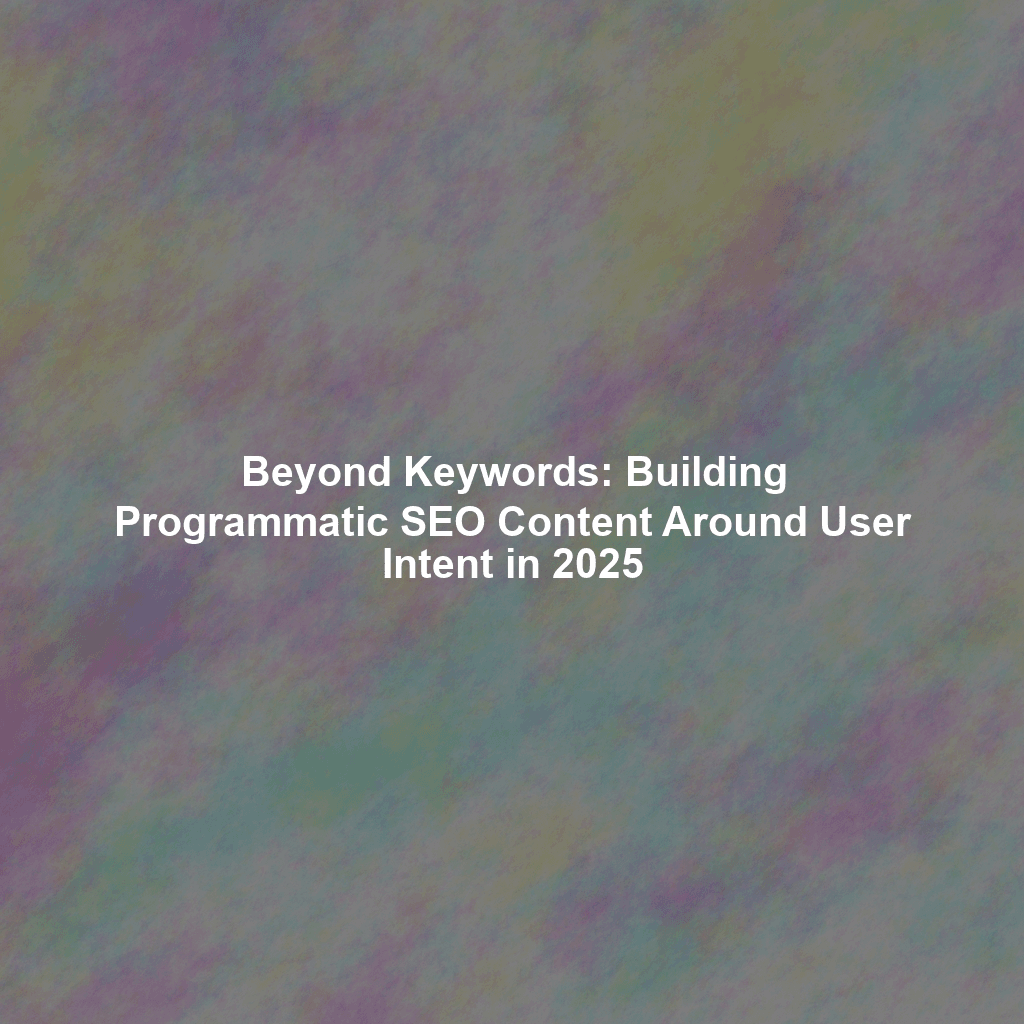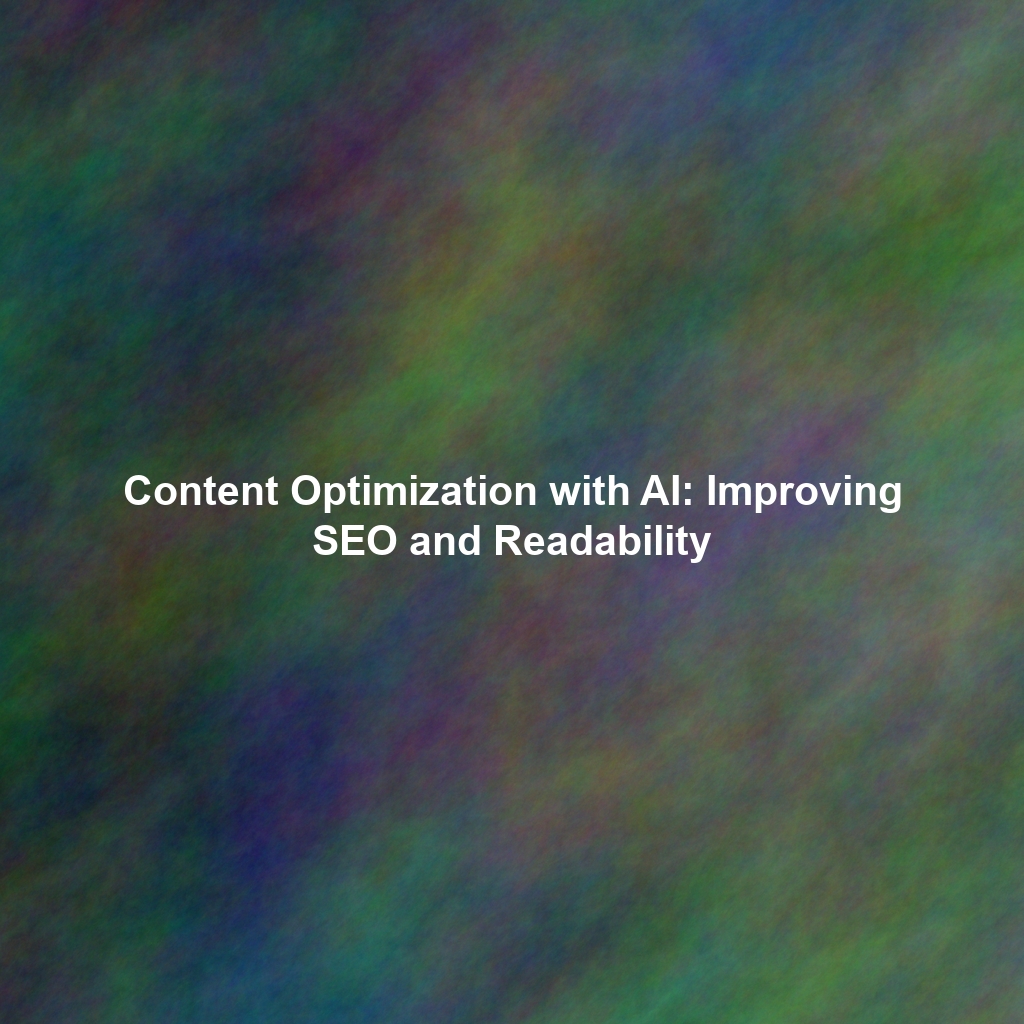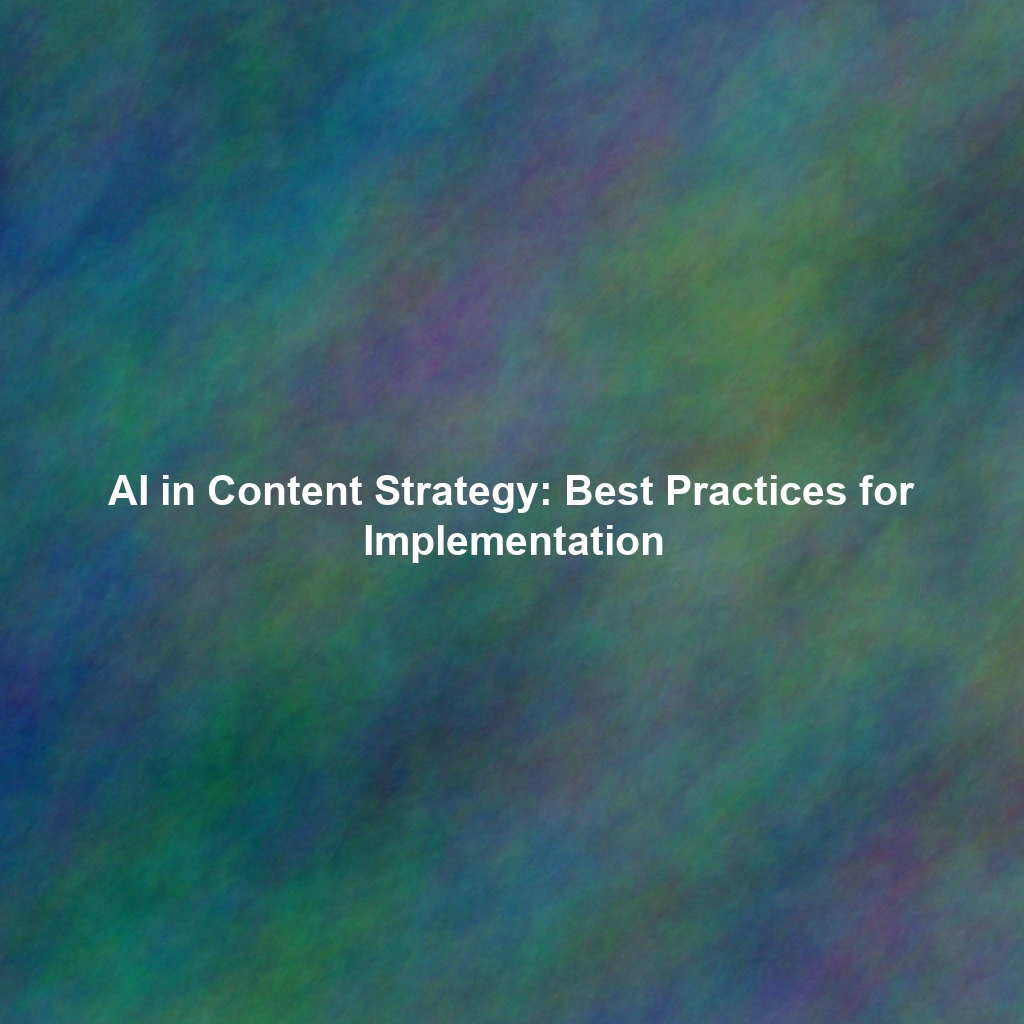Welcome to the future of programmatic SEO! In 2025, simply stuffing keywords into dynamically generated pages won’t cut it. The game has evolved. Google’s algorithms are smarter, and users are more demanding. To truly dominate the SERPs, you need to move beyond basic keyword targeting and embrace a strategy that deeply understands and anticipates user intent. This isn’t just about what people search for, but why they’re searching in the first place. This guide, part of the Lazy Marketer’s approach to Programmatic SEO, will show you how to do exactly that.
The Demise of Keyword-Centric Programmatic SEO
For years, programmatic SEO has relied heavily on identifying relevant keywords and automatically generating pages based on those terms. While this approach offered a scalable way to create content, it often resulted in thin, low-quality pages that provided little value to users. Google’s increasing sophistication in understanding semantic relationships and user needs has rendered this approach increasingly ineffective. Think about it: a page that lists “cheap flights to London” based on keyword data alone may not address the user’s underlying intent – are they looking for flights for a specific date, traveling for business or leisure, or seeking flights from a specific airport?
Why User Intent Matters More Than Ever
Google’s focus on user experience (UX) and Expertise, Authoritativeness, and Trustworthiness (E-E-A-T) guidelines means that content must be genuinely helpful and relevant to the searcher’s needs. By understanding user intent, you can create programmatic SEO pages that:
- Provide comprehensive answers to their questions.
- Offer tailored solutions to their problems.
- Anticipate their next steps in the buying journey.
- Establish your website as a trusted resource.
Unlocking User Intent: A Data-Driven Approach
Shifting to an intent-based programmatic SEO strategy requires a multi-faceted approach, leveraging data from various sources.
1. Deep Dive into Search Query Data
Go beyond simple keyword research. Analyze long-tail keywords, related searches, and “People Also Ask” sections to uncover the nuances of user intent. Tools like:
- Google Search Console: Identify queries that are already driving traffic to your site and analyze their performance.
- SEMrush/Ahrefs: Explore related keywords, search volume trends, and keyword difficulty.
- AnswerThePublic: Discover questions that people are asking related to your target keywords.
2. Leverage Natural Language Processing (NLP)
NLP techniques can help you analyze text data to understand the underlying meaning and sentiment. This can be particularly useful for:
- Topic Modeling: Identify the main topics and themes related to your target keywords.
- Sentiment Analysis: Understand the emotions and opinions expressed in user reviews and forum discussions.
- Entity Recognition: Identify the key entities (people, places, organizations) mentioned in search queries and content.
Consider using tools like Google’s Natural Language API or Python libraries like NLTK and SpaCy for your NLP analysis.
3. Harness the Power of Machine Learning (ML)
ML algorithms can be trained to predict user intent based on historical data and search patterns. This can enable you to create more personalized and relevant programmatic SEO content.
- Intent Classification: Train a model to classify search queries into different intent categories (e.g., informational, navigational, transactional).
- Personalized Content Recommendation: Recommend relevant content to users based on their search history and behavior.
Platforms like TensorFlow and scikit-learn offer powerful ML capabilities.
4. Analyze User Behavior on Your Website
Your own website data is a goldmine of information about user intent. Analyze metrics like:
- Bounce Rate: High bounce rates may indicate that your content is not meeting user expectations.
- Time on Page: Longer time on page suggests that users are engaged with your content.
- Click-Through Rate (CTR): Low CTRs may indicate that your page titles and meta descriptions are not compelling enough.
- Conversion Rate: Track how well your programmatic SEO pages are converting visitors into customers.
Use tools like Google Analytics and heatmaps to gain deeper insights into user behavior.
Practical Examples of Intent-Based Programmatic SEO
Let’s illustrate how this works with a few examples:
- Example 1: “Best Running Shoes”
Instead of a generic list of running shoes, create pages tailored to specific user needs, such as “Best Running Shoes for Flat Feet,” “Best Running Shoes for Trail Running,” or “Best Running Shoes for Beginners.” Each page should address the specific concerns and requirements of that target audience.
- Example 2: “Find a Local Dentist”
Don’t just list dentists by location. Incorporate information about their specialties (e.g., cosmetic dentistry, pediatric dentistry), accepted insurance plans, and patient reviews to cater to different user preferences.
- Example 3: “Learn Spanish Online”
Rather than a single page, offer content catering to different learning styles (e.g., “Learn Spanish Online with Games,” “Learn Spanish Online with Native Speakers,” “Learn Spanish Online for Travel”).
Tools for the Lazy (But Smart) Programmatic SEO Marketer
Here are a few tools to help you automate and streamline your intent-based programmatic SEO efforts:
- GPT-3 and other Large Language Models (LLMs): Use LLMs to generate high-quality, intent-optimized content at scale.
- Data Scraping Tools (e.g., Scrapy, Beautiful Soup): Automate the process of collecting data from websites and APIs.
- No-Code Automation Platforms (e.g., Zapier, Integromat): Connect different tools and automate your workflow without writing code.
Conclusion: The Future is Intent-Driven
In 2025, programmatic SEO is no longer about simply generating pages based on keywords. It’s about understanding the underlying intent behind those keywords and creating content that truly meets the needs of users. By leveraging data, NLP, and ML, you can create a programmatic SEO strategy that not only ranks higher in search results but also provides a better user experience and drives more conversions. Embrace this shift, and you’ll be well-positioned to succeed in the evolving landscape of search.
 Skip to content
Skip to content

